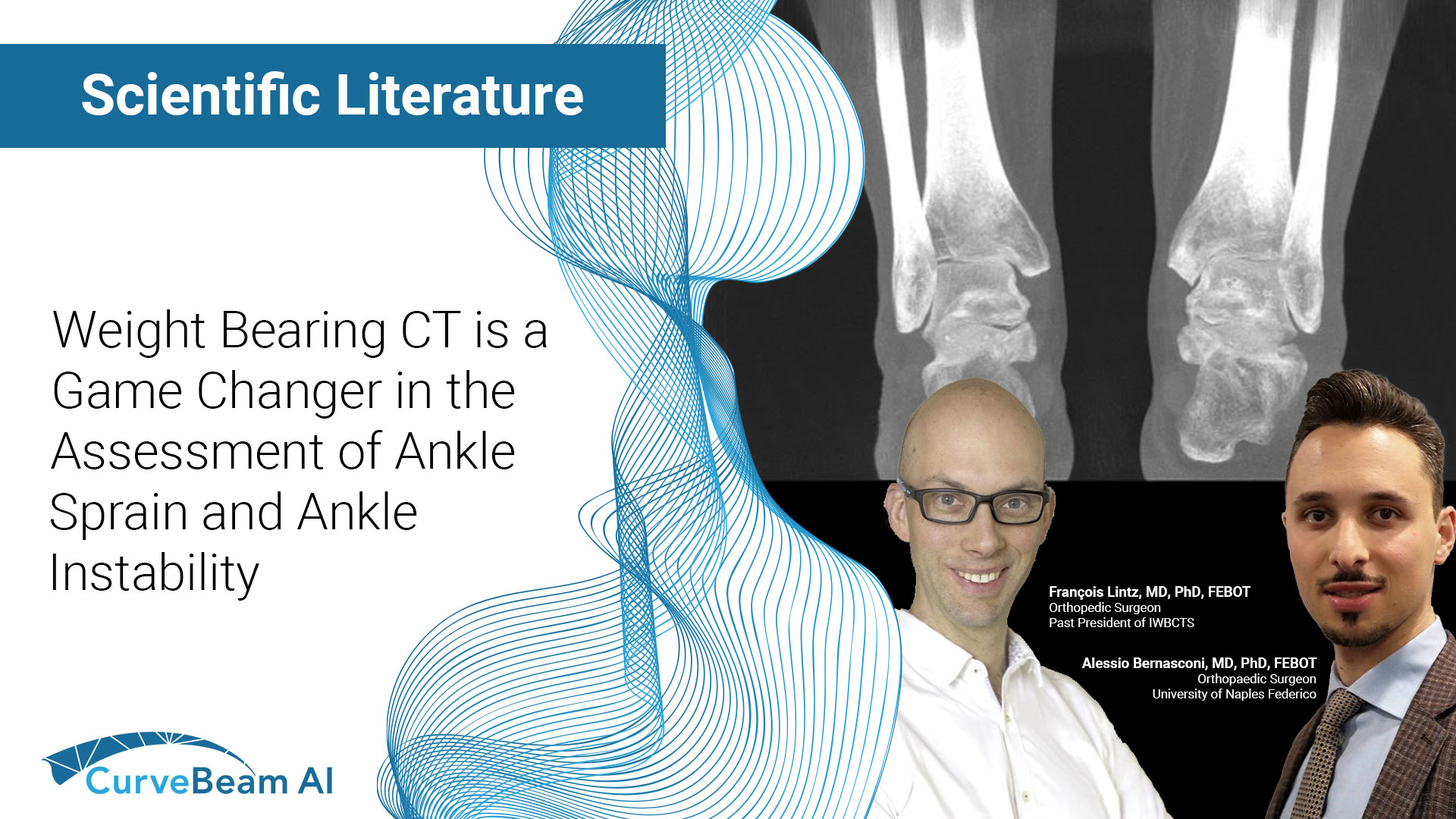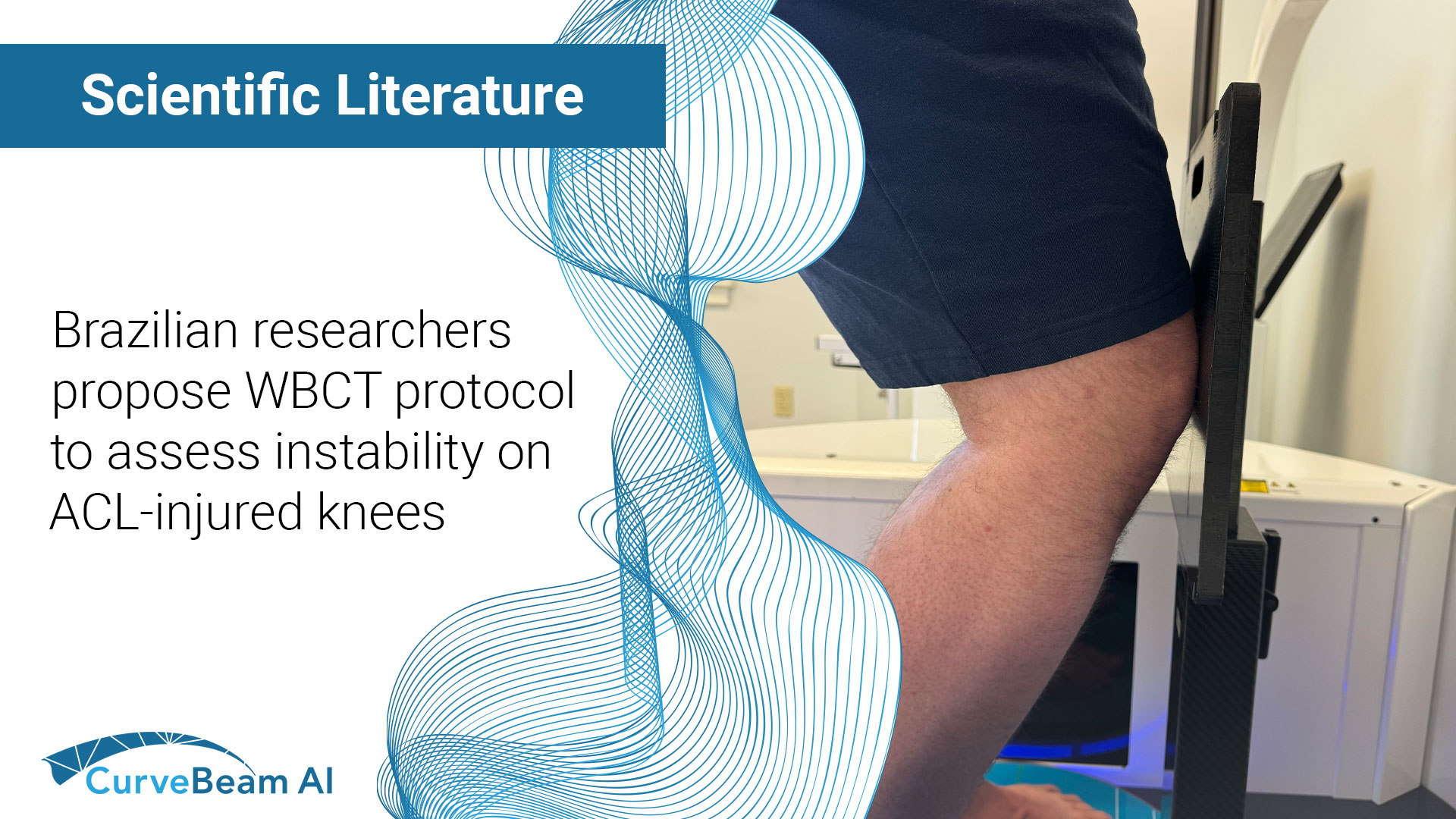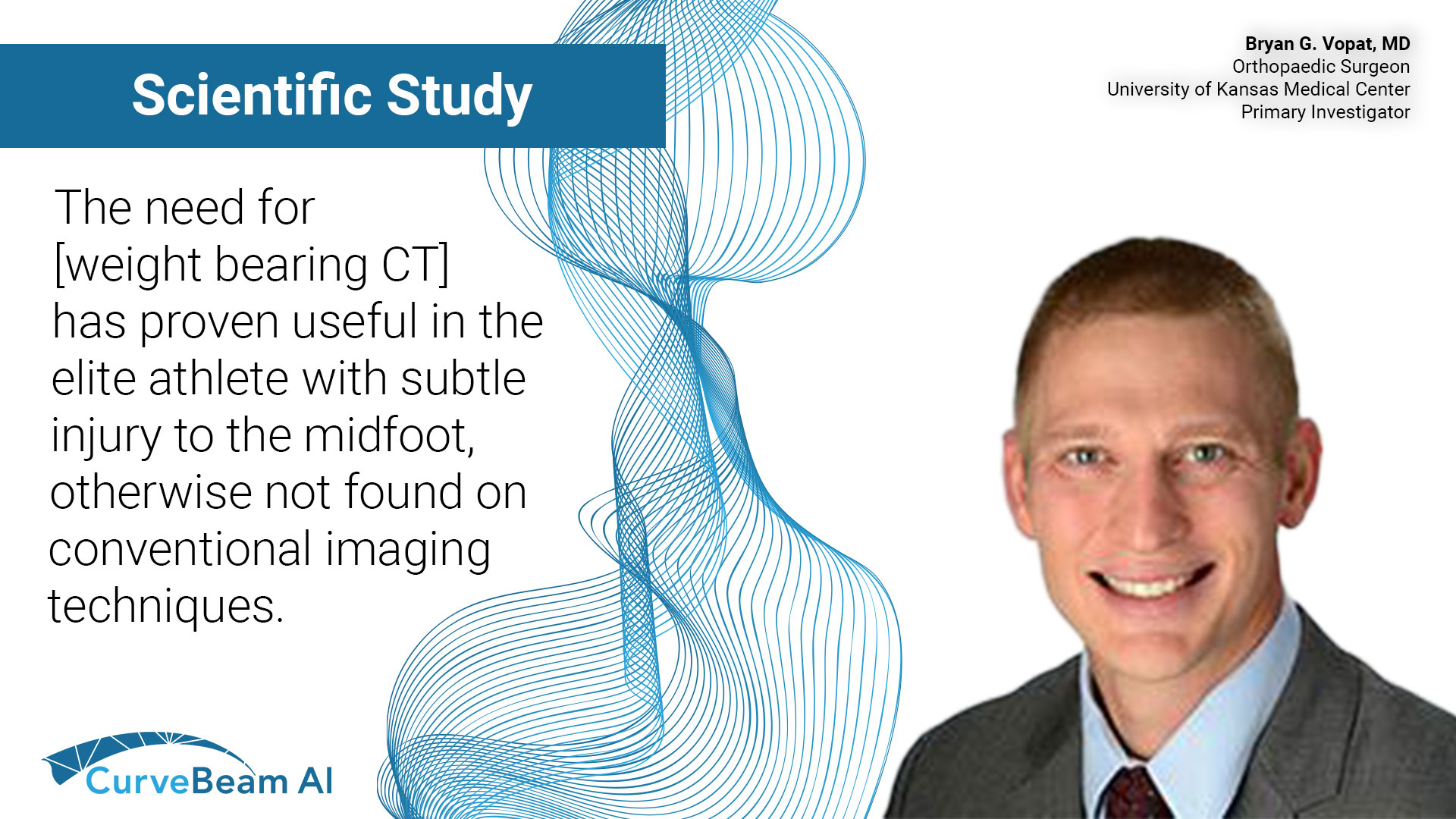Key Points: The most important advantage of weight bearing CT (WBCT), which utilizes cone beam…

Accuracy of Weight Bearing CT versus Non-Weight Bearing CT Scans for Patient-Specific Instrumentation in Total Ankle Replacement
As Total Ankle Replacement (TAR) becomes the gold standard for end stage ankle arthritis, methods to improve implantation accuracy to increase implant lifespan become increasingly important. A recent study found that using Weight Bearing CT (WBCT) for pre-operative patient-specific navigation resulted in a 100% rate of neutral ankle alignment and correction in the coronal deformity post-operatively. Dr. Mitchell Thompson, DPM, a Foot & Ankle Surgery fellow at Orthopedic Foot & Ankle Center (OFAC) in Worthington, Ohio presented these and other findings during the ACFAS Scientific Conference in Las Vegas in May, 2021.
Providers at OFAC used the CurveBeam LineUP to acquire pre-operative WBCT scans for the Wright PROPHECY(TM) Pre-Operative Navigation System. The scans were compared to WB radiographs taken 4-6 weeks post-operatively to review tibial and talar component predictive accuracy.
Ten patients met the desired criteria: PROPHECYTM was used to plan an INBONE 2TM or InfinityTM for a primary total ankle procedure between July 2019 to October 2020. Revision cases were excluded from the study.
While average post-operative varus was 1.16 degrees and post-operative valgus was 0.52 degrees, the tibia was 100% accurately predicted, and the talus was 90% accurately predicted.
Results within the coronal plane showed an average post-operative difference between anatomic and implant axis’ of 0.84 degrees, a 0.1 degree improvement between PROPHECYTM predictions and post-operative implant placement. All patients had neutral ankle alignment and all patients had correction of the coronal deformity.
Sagittal plane views showed an average post-operative difference between axis’ of 1.88 degrees and a 1.09 degree difference between PROPHECYTM predictions and post-operative implant placement. Overall, there was a 100% correct prediction for tibial sizing and a 90% correct prediction for talar sizing components.
WBCT scans predicted the talar component more accurately than non-WBCT scans (100% vs. 96%, respectively), according to the researchers. WBCT scans also resulted in better coronal plane and sagittal plane corrections than cases planned with non-WBCT scans.
Key takeaways of the study were:
- WBCT for pre-operative patient specific navigation in TAR is not only accurate but also reproducible;
- WBCT provides more accurate implant placement than non-WBCT;
- WBCT more accurately predicts implant size;
- and WBCT may be more helpful identifying periarticular deformities that need to be correct in conjunction with a TAR.
Researchers anticipate the study results will be accepted for publication this summer.





